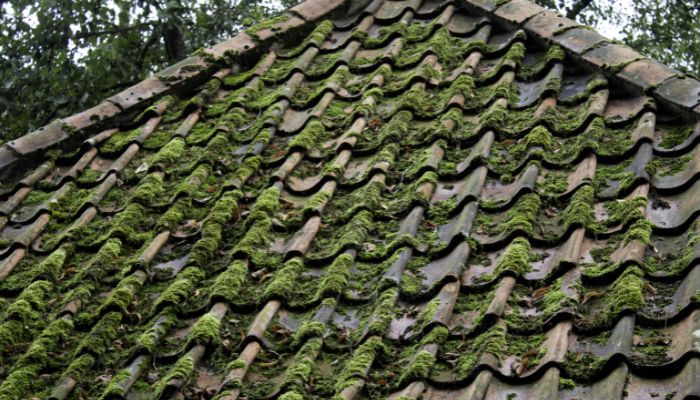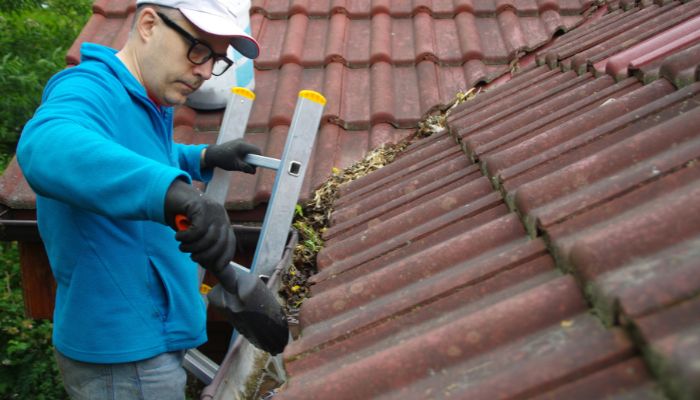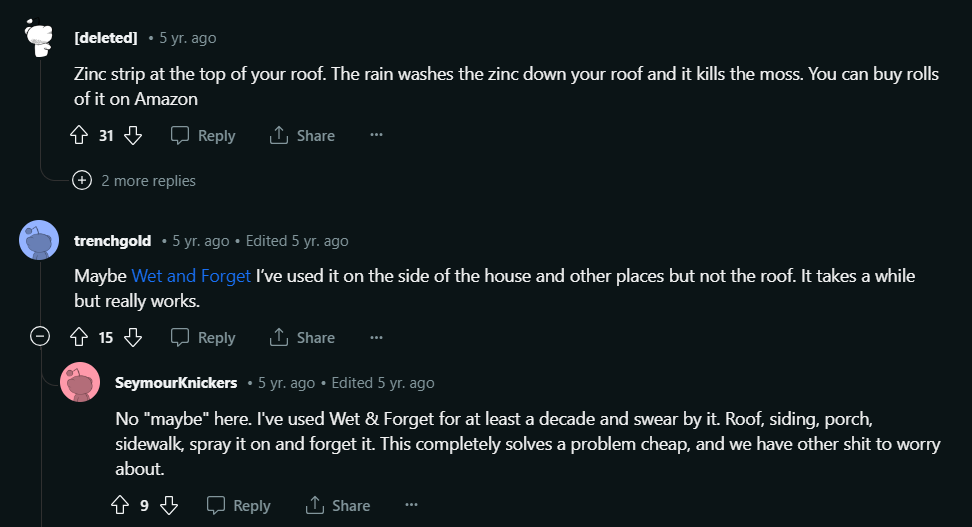If you've noticed moss growth on your roof, it's important to take action quickly to prevent damage and potential leaks. Moss can trap moisture and cause shingles to deteriorate over time, leading to costly repairs.
Fortunately, removing moss from your roof is a straightforward process that can be done with a few basic tools and techniques.
Before you start removing moss, it's important to understand how it grows and why it's a problem. Moss thrives in damp, shaded areas and can quickly spread across a roof if unchecked.
It can also trap moisture against the roof, leading to rot and decay. Removing moss is not only important for the health of your roof but also for the safety of your home. With the right tools and techniques, you can remove moss from your roof and prevent future growth.
Moss is a type of plant that thrives in damp and shaded environments. It grows on surfaces that are often in contact with moisture, such as roofs, walls, and sidewalks.

Moss growth on roofs can cause a number of issues, including:
Moss growth on roof shingles is often a result of a combination of factors, including:
If you notice moss growth on your roof, it's important to take action as soon as possible to prevent further damage. In the next section, we'll discuss removing moss from your roof.
Before you begin removing moss from your roof, there are a few things you should do to prepare. These steps will help ensure that the process goes smoothly and that you don't cause any damage to your roof.

Before you start cleaning, it's important to examine your roof for any signs of damage. Look for cracked or missing shingles, as well as any other damage that might be present. If you notice any damage, you should repair it before attempting to remove the moss.
Check the severity of the moss growth on your roof. If the moss is only present in a few small areas, you may be able to remove it yourself. However, if the moss is widespread and has been growing for a long time, it's best to call in a professional to handle the job.
Make sure your roof is ready to be cleaned. Remove any debris or fallen leaves from the roof, as these can make it more difficult to remove the moss. You should also clear any gutters or downspouts to prevent water from backing up and causing damage.
Protect any sensitive areas around your home before you begin cleaning. Cover any plants or shrubs that are close to the house, as the cleaning solution can be harmful to them. You should also cover any outdoor furniture or other items that the cleaning solution could damage.
By following these steps, you can ensure that your roof is ready for moss removal and that you don't cause any damage to your home. With proper preparation, you can get rid of moss on your roof and keep it looking great for years to come.
If you're looking to remove moss from your roof, there are a few techniques you can use. Here are some methods to get rid of moss from your roof:

One way to remove moss from your roof is using a homemade moss killer. You can make a natural moss killer by mixing equal parts of white vinegar and water.
Another homemade moss killer is a mixture of baking soda and water.
Another way to remove moss from your roof is by using bleach.
Bleach is a powerful moss killer that can remove moss from your roof quickly. However, it can also damage your roof if not used properly.
To use bleach for moss removal, follow the steps below:
Be sure to wear protective gear when using bleach, such as gloves and goggles.
Remember that bleach can also kill plants and damage the environment, so it's important to use it sparingly and only when necessary.
By using these techniques, you can effectively remove moss from your roof and keep it clean and healthy.
Now that you've successfully removed the moss from your roof, it's important to take steps to prevent it from growing back. Here are some tips to keep your roof moss-free:
Moss spores often land on your roof from nearby moss patches, which generally can be found on mature trees.
To prevent this, prune nearby trees to reduce the amount of shade on your roof. This will help to keep your roof dry and less conducive to moss growth.
Regular roof maintenance can help prevent moss growth. Keep your roof clear of debris such as leaves and twigs, which can trap moisture and provide a breeding ground for moss. Use a broom or leaf blower to remove any debris.
Zinc and copper strips are effective in preventing moss growth on roofs. When it rains, the metal releases ions that inhibit moss growth. Install strips near the ridge of your roof, where moss is most likely to grow.

The same was reported by many users on Reddit, that using Zinc or Wet & Forget fluid solved the problem.
If you live in an area with much moss growth, you may want to consider applying a moss killer to your roof.
This can be done by mixing a water solution and a roof cleaner or moss killer and applying it to your roof with a garden sprayer. Be sure to follow the manufacturer's instructions carefully and wear protective gear.
Regular roof inspections can help you catch any moss growth early on. Hire a professional roofer to inspect your roof at least once a year to check for any signs of moss growth or other damage.
This will help you catch any problems early on and prevent them from becoming more serious.
By following these tips, you can help prevent moss growth on your roof and keep it looking great for years to come.
Is moss on a roof harmful?
Moss on a roof can be harmful if left untreated. It can trap moisture, which can lead to the growth of mold and mildew. This can cause damage to your roof and affect the air quality inside your home. Additionally, moss can make your roof more slippery and dangerous to walk on.
How can I prevent moss from growing on my roof?
One way to prevent moss from growing on your roof is to keep your gutters clean and clear of debris. This will prevent water from pooling on your roof and creating a moist environment that moss thrives in. You can also trim back any overhanging tree branches to reduce the amount of shade on your roof, as moss prefers shady areas.
What is the cost of professional roof moss removal?
The cost of professional roof moss removal can vary depending on the size of your roof and the extent of the moss growth. On average, you can expect to pay between $300 and $500 for professional moss removal services.
Where can I find moss killer for my roof?
You can find moss killer for your roof at most home improvement stores, as well as online retailers. Look for products that are specifically designed for use on roofs and follow the manufacturer's instructions carefully.
What is the best way to remove moss from a roof without damaging shingles?
The best way to remove moss from a roof without damaging shingles is to use a soft-bristled brush or a pressure washer on a low setting. Avoid using a high-pressure washer or scraping the moss off with a tool, as this can damage your shingles.
Is bleach or vinegar more effective for killing moss on a roof?
Both bleach and vinegar can be effective for killing moss on a roof. However, bleach is more potent and can be harsh on your roof and the environment. Vinegar is a more natural and eco-friendly option, but may require multiple applications to remove the moss fully.
Maintaining your roof's health by removing moss is crucial to preventing long-term damage and costly repairs.
Understanding how moss grows and taking proactive steps to remove and prevent it can significantly extend the lifespan of your roof.
Regular roof maintenance, including trimming overhanging branches, keeping your roof clean, and using preventative measures like zinc or copper strips, can help keep your roof moss-free.